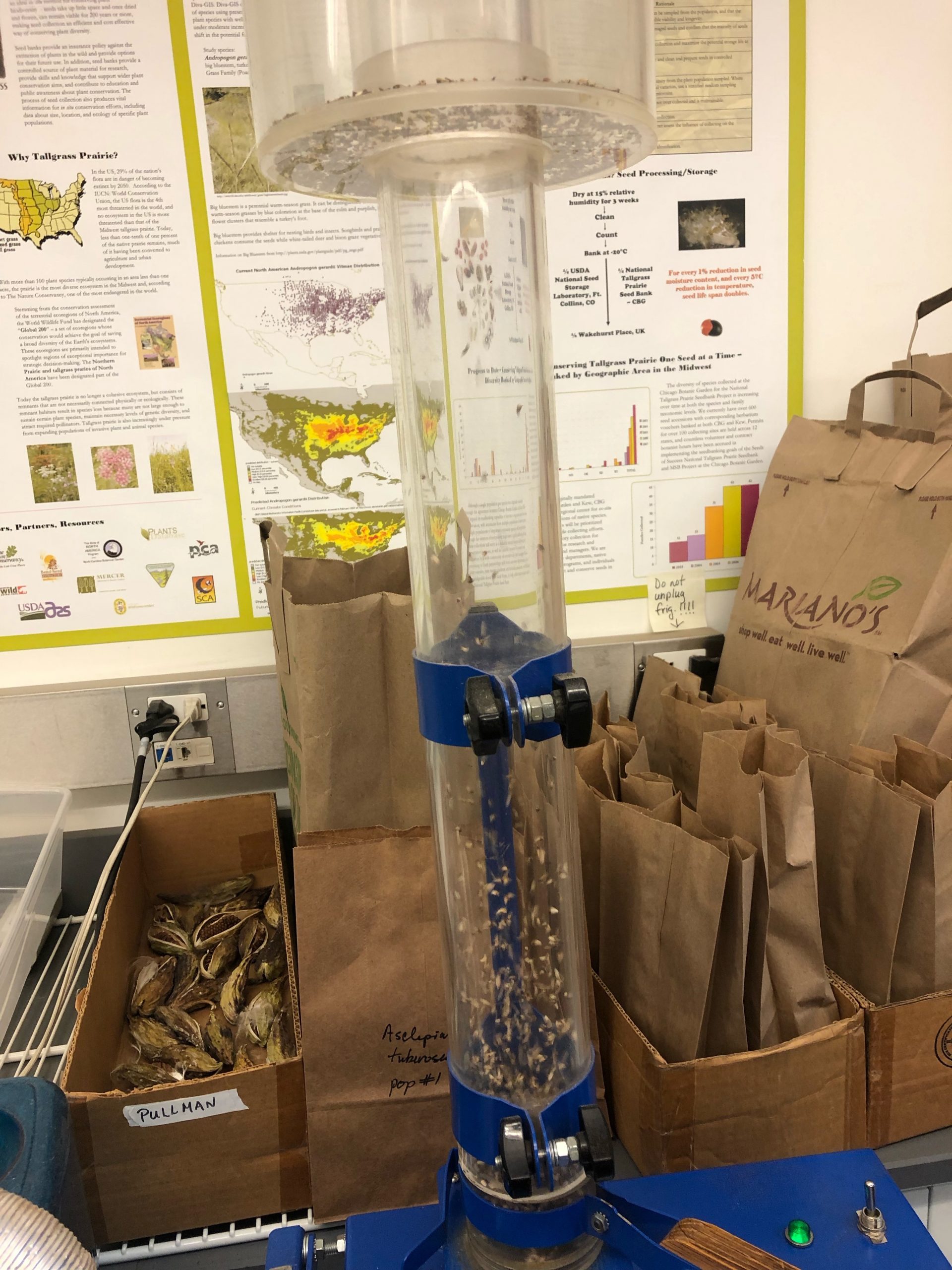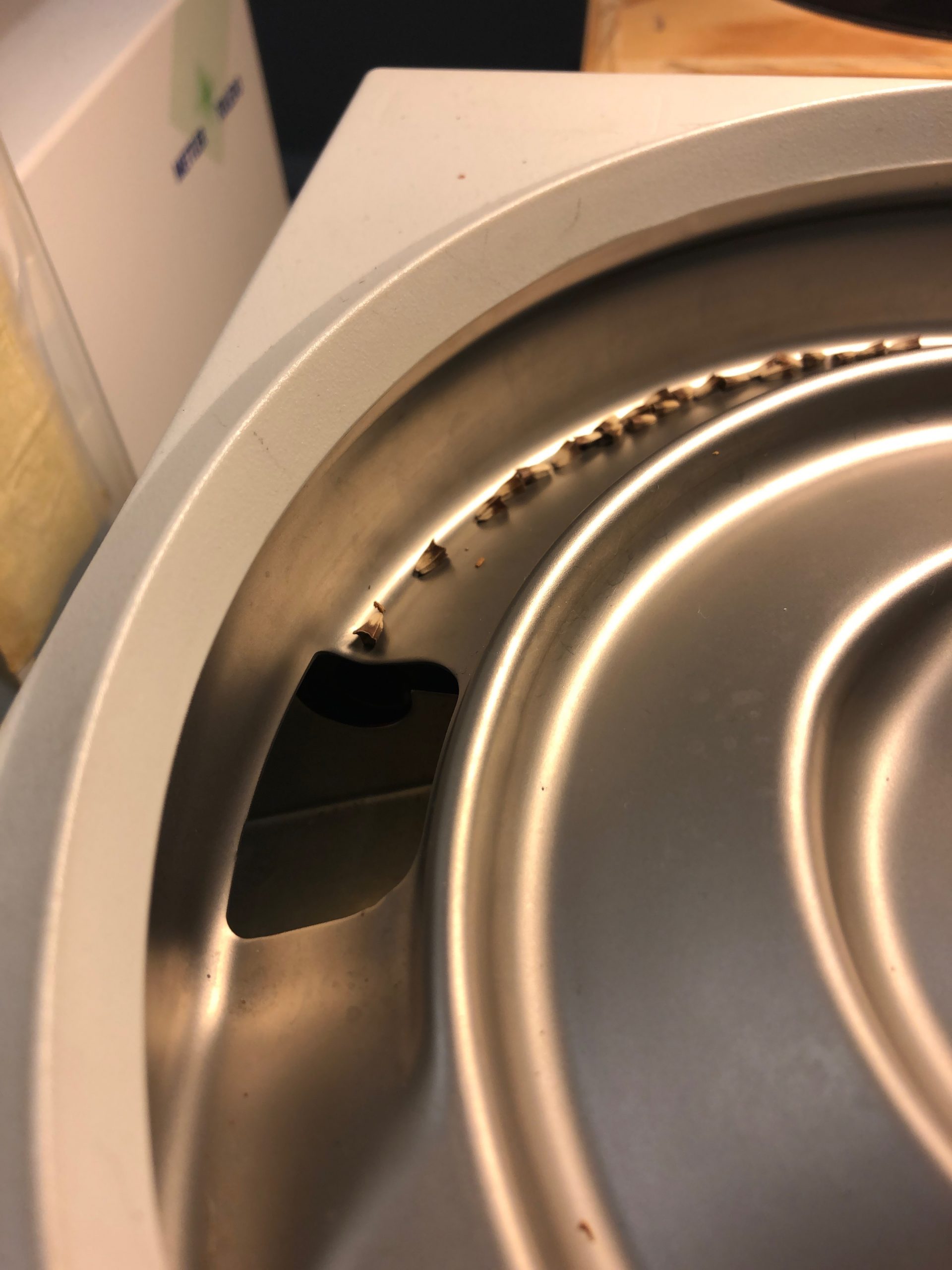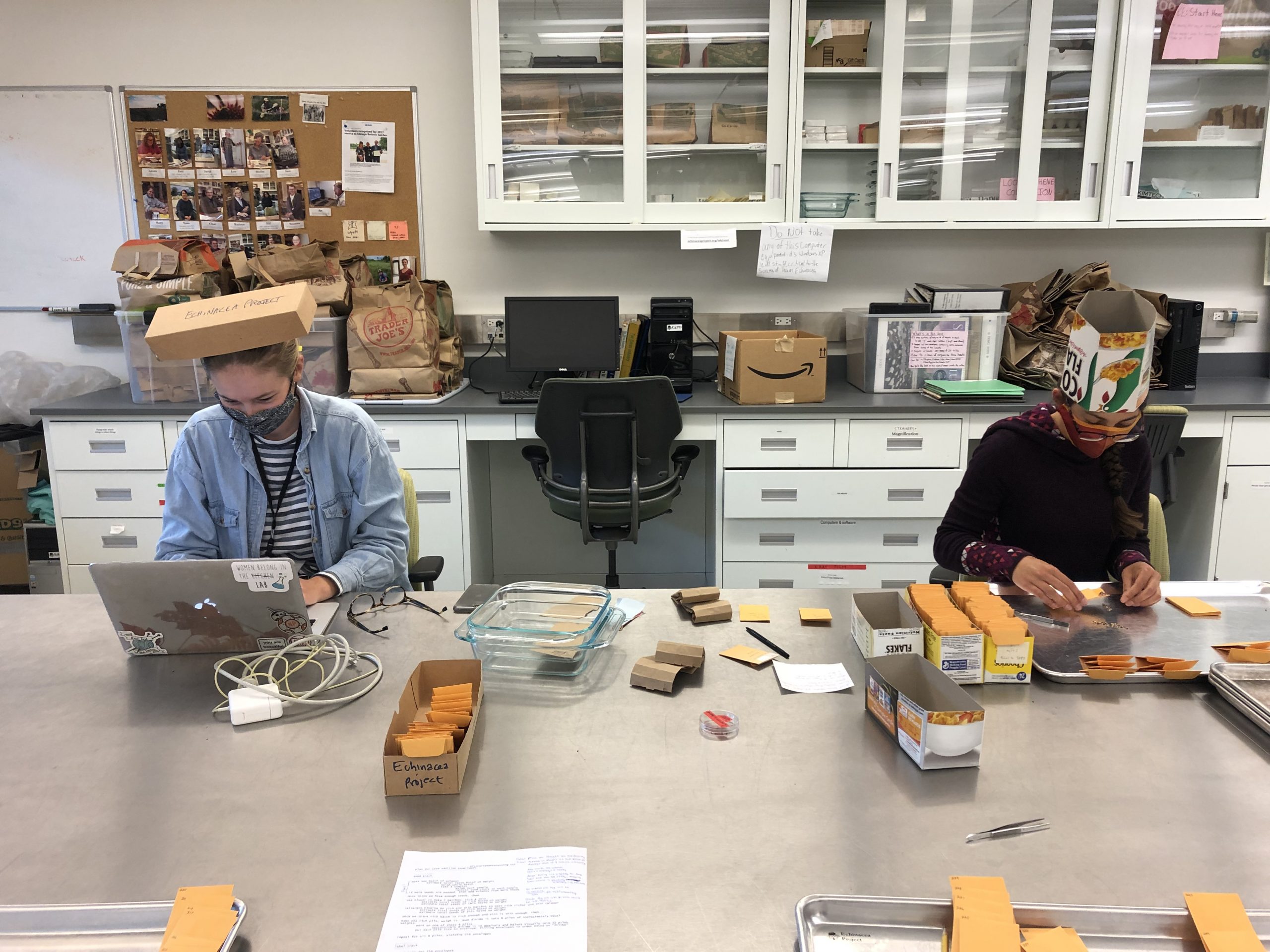For the seed addition experiment, we used achenes from p2 in 2016, which were selected for the batch’s particularly high seed set. The achenes were originally in 160 envelopes sorted by flowering head so that we knew which maternal plants were contributing to the experiment. The envelopes were selected mostly randomly, though some that appeared upon visual inspection to have non-viable achenes were excluded to ensure maximum viability in the achenes used for the experiment.
We combined the achenes from all 160 envelopes into one pile in order to make a homogenized mixture. Using a column blower set to 5/8″, we segregated the “rich” achenes (containing a seed) from the “thin” achenes (seedless). Achenes were considered rich if their mass was above 2 mg. We measured a sample of achenes from the final rich batch to ensure exclusion of thin achenes, finding that only about 1/30 achenes was <2 mg, and acceptable margin of error.
This collection of isolated rich achenes would became our source of seeds for the seed addition experiment. In order to divide achenes equally for use along different transects, we counted by hand achenes from the rich pile and placed them into envelopes, with each envelope containing 50 achenes. During this process, we removed achenes that appeared to be visually severely damaged to ensure that only viable achenes will be used for the experiment.
The end result of the achene selection process was 250 envelopes each containing 50 achenes, all of which were taken from a homogenized mixture of achenes whose maternal plants flowered in p2 in 2016.




Leave a Reply